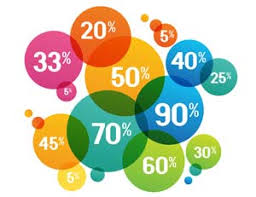
In Part 1, I asked if you fear statistics. Like basketball and football statistics, Sunday School statistics simply tell us how we are doing beyond the “eye test.” We may think Sunday School is doing great or not making progress. Statistics help us to know how Sunday School is doing beyond the surface.
Regularly tracking your attendance, enrollment, new members, contacts, classes, and workers can help you to have a healthy sense of where you are. How are you doing this month compared to last month and this month last year? This helps you keep your finger on the pulse of Sunday School. If some statistics are up while others are down, that may tell you where additional work is needed.
In Part 1, I shared two of those statistics: (1) percentage of attendance versus enrollment and (2) percentage of Sunday School attendance versus worship attendance. In Part 2, I want to share about two more statistics:
- Workers versus average total Sunday School attendance. This statistic lets you know whether you are staffed properly to grow. Add up your workers: general officers, department/division directors, teachers, and class leaders (like outreach leader, care leaders, etc.). Simply divide your average total Sunday School attendance by your number of workers. If your result is more than 5, you need to add more workers to avoid decline from a poor span of care. If the number is less than 5, you have enough workers to lead your classes to (1) care well for your members, (2) reach out to prospects, and (3) grow.
- Classes versus average total Sunday School attendance. This statistic is similar to workers. It lets you know if you have enough classes to encourage attendance growth. Warning: read this entire paragraph before following instructions. Add up your classes: preschool, children, youth, and adult. Divide your average total Sunday School attendance by your number of classes. If your result is more than 10, you need to add more classes. If your result is less than 10, you may have enough classes to lead your Sunday School attendance to grow. CAVEAT: In churches averaging under 100, rooms tend to accommodate fewer and average attendance per class tends to run lower. In churches averaging over 400, rooms tend to accommodate more and average attendance per class tends to run higher. What does that mean? Continue to observe your number, add more classes, and work to keep or move the number below 10.
How is your Sunday School doing? Statistics matter. Care and organization matter. Plan to grow. Make disciples. Be revolutionary!
Leave a Reply